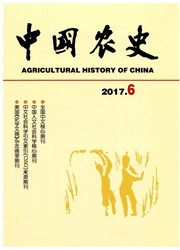

 中文摘要:
中文摘要:
陕蒙交界地区是典型的陕北黄土丘陵向毛鸟素风沙地过渡带,属于中国北方生态过渡带的中段,也是传统的农牧交错带地区,分布着不同时期的长城和古代城堡遗址,文化景观与自然景观在空间的分布上表现出高度的一致性,是开展历史时期人类活动对地表生态系统影响研究的典型地区。为隔绝蒙汉交往,清初在长城沿线的陕蒙交界地区设立了“禁留地”。至康熙末年始允许汉民进入蒙地开垦“伙盘地”.随之设立“黑界地”限制汉民向北开垦。但是,私垦的趋势无法阻挡,伙盘地在清中期开始向北一直扩展,突破了黑界地的限制,至清末贻谷放垦最终确立了陕蒙交界土地利用的格局。研究黑界地的由来及范围,对于研究清代陕蒙交界地区的土地利用问题和人与环境之间的互动关系,意义十分重大。
 英文摘要:
英文摘要:
The Border Area between Shanxi and Inner Mongolia is a typical transitional zone between the Mu Us sandy land and Loess Hilly Region of Northern Shaanxi Province, which is the middle part of the transitionally ecological zone in North China and is also an agro-pastora] zone. This area has the sites of many Great wall and castles that were built during different periods and the cultural landscape and natural landscape in this area appear highly consistent. So it is a typical area for the study of the influence of human activity on the earth ecological system in different historical periods. In the early stage of Qing Dynasty, this area set up "Jinliudi" to prevent the communication between the Hans and Mongolian;Until the late period of Kangxi, the Hans were permitted to reclaimed "Huopandi" in the Mongolia area, and then the government set up "Heijiedi" to restrict the Hans' activity of reclaiming north. However, the trend of private reclamation couldn't be stopped and in Late Qing Dynasty the policy of discharge reclamation which was proposed by YiGu established the pattern of the land use in the border area between Shaanxi and Inner Mongolia. To study "Heijiedi" is significant to make a research on the land use in this area, which reflected the interactive relation between the hu-man being and the environment in the Qing Dynasty for more than 300 years.
 同期刊论文项目
同期刊论文项目
 同项目期刊论文
同项目期刊论文
 期刊信息
期刊信息
